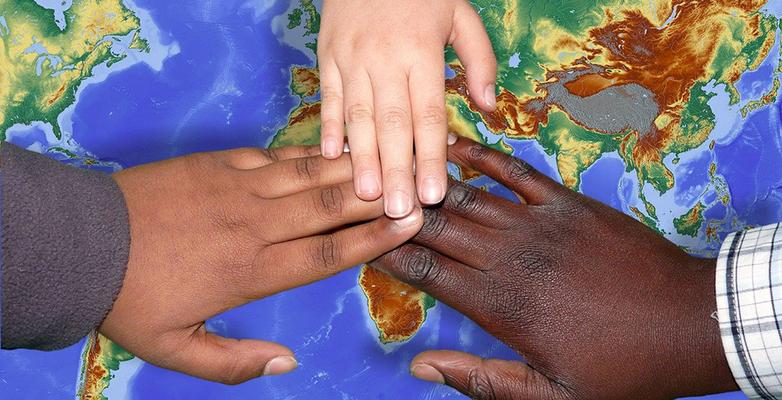
Climate Migrants
We know that the climate crisis is making the world warmer and even dangerously hot in many places. We know that climate change is making hurricanes and other extreme weather events more intense and frequent. And we know that warmer temperatures are causing seas to rise and soils to dry up, which increases the risk of several vector- and water-borne infectious diseases.
You know what happens next.
Health problems like heat exhaustion and respiratory distress, with young people, seniors, agriculture workers and others with outdoor jobs, and those with existing health challenges suffering the most. Homes and lives lost to floodwaters and storm surge. Crops and farms failing and the nutritional value in much of what does grow declining. Deadly diseases spreading to places that have never known them.
Is it any wonder people in many parts of the world are fleeing this environmental devastation en masse?
WHAT IS CLIMATE MIGRATION?
When a person or groups of people are forced or choose to leave their homes, temporarily or permanently, largely because of sudden- or slow-onset (more below) changes in their regional environment due to the climate crisis, it is considered climate migration.
This movement can happen within a state or across an international border.
So when we’re talking about climate migrants, we’re talking about people who leave their homes specifically due to climate stressors like changing rainfall patterns and heavy flooding, sea-level rise, and more frequent and powerful floods and hurricanes.
Though climate migration receives the most media attention when it crosses borders, the majority of climate migrants actually do so within their own countries. India, Philippines, Bangladesh, China, and the United States (you read that right) were the five countries with the most new displaced persons in 2019.
MIGRANTS OR REFUGEES?
While many people, and particularly media outlets, refer to them as one and the same, climate migrants are not considered refugees under international law. “Refugee” is an expressly defined legal term, one applied specifically to people who flee their homes for fear of “being persecuted for reasons of race, religion, nationality, membership of a particular social group or political opinion,” according to Article 1 of the 1951 UN Refugee Convention.
Because the environment is not considered a persecuting agent in the adopted policy, people fleeing environmental stressors are thus not technically refugees.
It is, however, worth noting that this definition is 70 years old. As the climate crisis worsens and climate migration increases, the definition may be in dire need of revision if climate migrants are to get the help and support they so desperately need from the international community.
SUDDEN-ONSET DISASTER
Sudden-onset disasters include events like hurricanes, wildfires, and floods – things that occur, you guessed it, suddenly, and can force people to migrate. Typically, though not always, sudden-onset disasters lead to internal migration (migration within one’s country) that is temporary.
The places most affected by internal, sudden-onset displacement have been South Asia, East Asia, Southeast Asia, and Sub-Saharan Africa.
SLOW-ONSET DISASTER
Slow-onset disasters refer to things like sea-level rise, drought, unfavorable agricultural conditions, etc. These are disasters that develop more gradually and do not emerge from a single, distinct event. Typically, slow-onset disasters lead to cross-border movement that is permanent.
Sub-Saharan Africa, South Asia, and Latin America are particularly vulnerable to large-scale displacement due to slow-onset impacts of climate change.
HOW TO HELP
If we act now, we could reduce the number of people forced to move because of the climate crisis by as much as 80 percent, according to a report by the World Bank, which outlines three strategies to prevent an internal climate migration crisis:
1. Cut Greenhouse Gases: The greatest impact – and frankly, the most obvious – solution. If we cut greenhouse gas emissions now and significantly, a far lower number of people will need to migrate.
2. Invest in More Research: We need more investment to better understand where and how climate impacts might lead to migration.
3. Create Better Policy: National governments need to not only integrate climate migration into all facets of development planning but also implement policies that address migration and protect climate migrants.
Whatever the solution, the potential for a climate migration crisis grows by the day, as the climate crisis rages. And it is imperative that the international community work to protect the millions of people who are expected to be displaced.
It’s clear: We are facing the real possibility that the climate crisis could steal the chance for a better tomorrow from people all over the world. But it doesn’t have to be this way. Learn more about becoming a trained Climate Reality Leader and take action for climate justice in your community.

